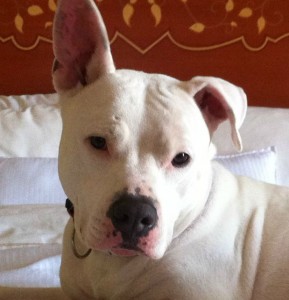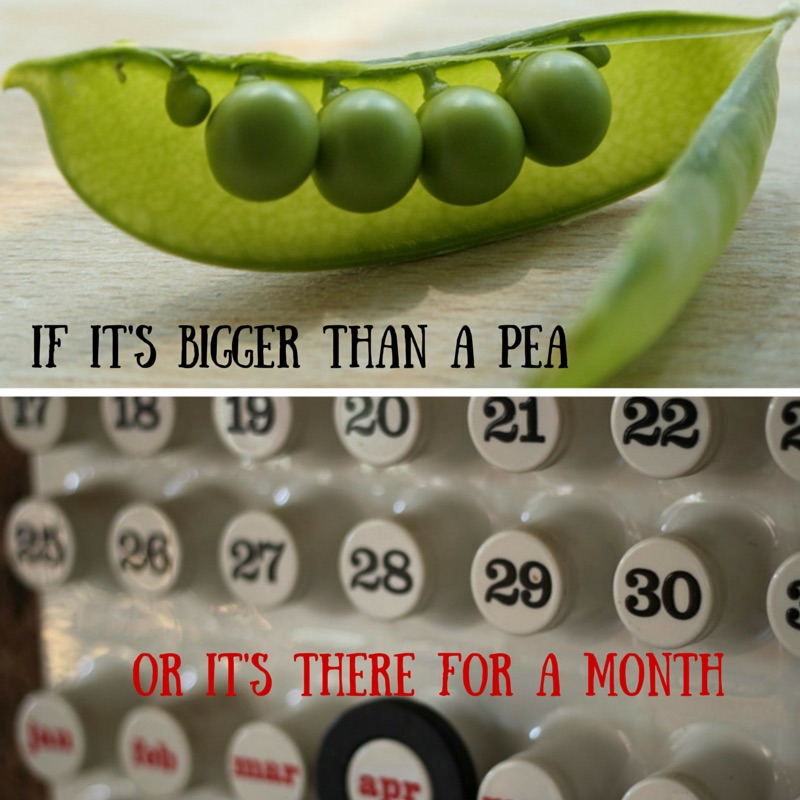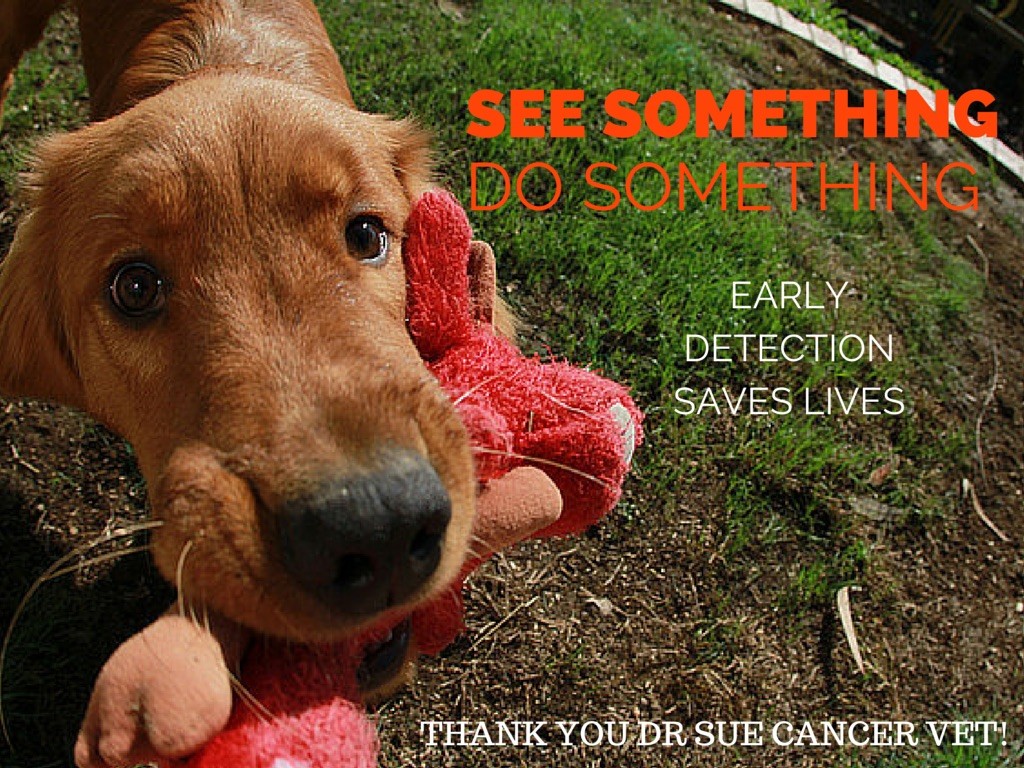
I’ve said it before, and I’ll say it again, “Early detection is key when it comes to treating cancer.” In the following article, Save Tons at the Vet! How to Keep Your Dog From Dying of Cancer, Dr. V expresses her practical point of view, and that of all the things you can do to help your pet live long and live healthy, none matters more than early detection.
Save tons at the vet! How to keep your dog from dying of cancer
by Dr. V
As a veterinarian, I’ve seen lots of cancers: lymphoma. Melanoma. Osteosarcoma. Hemangiosarcoma. Mast cell tumors. Wait, those are just my own dogs I’m talking about. When I factor in my clients, I think I’ve seen it all.
Dogs get cancer, at very high rates: about 50% of senior dogs die of it, if the statistics are to be believed. Why? Well, if you read overly simplified, graphics-intensive websites by people who really don’t know what they’re talking about, they will tell you that they know why cancer happens: GMOs. Preservatives. Kibble. Microwaves.
I wish it were that simple. It’s not. And the reason that line of thought drives me nuts is that it has sent so many lovely people into spirals of depression when their dog dies and someone on the internet convinced them it was their fault because they, the owner, did something terrible like feed their dog kibble or use a plastic bowl. People end up in therapy because of things like this.
Cancer is not a singular diagnosis; the type and breath of neoplastic disease means there’s often little resemblance from case to case; a transmissible venereal tumor bears very little resemblance to a splenic hemangiosarcoma. If we could pinpoint cancer to one cause, we’d all be rich. And yet, with all this secret knowledge, overall cancer rates aren’t budging.
Because I love a breed known for having one of the highest rates of cancer (is it the fact that Golden Retriever owners feed worse food overall? Or is it genetics?) I watch Brody pretty closely. Knowing that 60% of Goldens get cancer in their lifetime, I spend a lot of time inspecting him for lumps. As we speak, the largest observational study of its kind is currently underway to help us better understand what’s going on. In the meantime, you do the best you can but truthfully, there’s not a whole lot of ability to predict and prevent cancer. Even for the people who home cook organic food (sorry. Do it because you want to, not because it will make your dog live forever.)
You can save money (and life expectancy) by doing some simple things:
Knowing he is an at-risk breed, I do what I can to try and keep Brody healthy. When he gained too much weight on his food, I got the weight off. Obesity is thought to be a risk factor for cancer. Just as importantly, I get his bumps evaluated and when I find one, I don’t mess around.
The dog eats like a king; I give him the good stuff because I care about quality ingredients, though not enough to condemn people who can’t afford it. But even with his high end diets, at age 6, he’s on his second cancer. The first one, a melanoma, was excised two years ago and has yet to recur- because we caught it early. And now we have this: a little teeny ear lump.
I thought it was no big deal, but I got it evaluated anyway. See? We vets do it too. A lump is a lump is a lump. Until you get it microscopically evaluated, you just don’t know. I just got the call last week: it’s a mast cell tumor. I’m thrilled we got this diagnosis
Am I thrilled Brody has a mast cell tumor? Of course not. They stink. Despite the fact that the visible mass is only half a centimeter, this type of tumor has tons of microscopic disease and is notorious for requiring huge surgical margins for a complete excision. For that little tiny tic-tac mass on his ear, he is very likely going to need to lose his entire pinna. (I’m getting a surgical consult this week.)
However, losing an ear is minor compared to where these things end up when people wait. You can lose an ear, but you can’t lose an entire head, for example. This is small beans compared to what lots of pets need to go through later in the game when masses grow. If we get a complete excision, this should be a closed case. And guess what? It’s so much cheaper than tons of radiation and chemo and massive surgeries. Win-win for the dog and your wallet. I’m not happy he has it, but I’m happy I know now, early.
Why wait? Aspirate that shizz!!
What one thing can you do to guarantee your pet won’t get cancer? There isn’t one.
What you can do is maximize their chances of survival and recovery: Don’t mess around. Dr. Sue Ettinger, veterinary oncologist and all-around brilliant person, has an initiative called Why Wait Aspirate that is as simple as can be: when a vet tells you that a lump is ok to “just watch”, what does that mean? When do you do more than watch it? Here’s Dr. Sue’s guidelines*:

ASPIRATE OR BIOPSY IT!
Easy peasy, no pun intended. Of all the things you can do to help your pet live long and live healthy, none matters more than early detection.
Reposted from: Pawcurious – Save tons at the vet! How to keep your dog from dying of cancer
*Photo Credits: Calendar by Michael Hyde, Flickr Creative Commons license; Peas by Isabel Eyre, Flickr Creative Commons License



